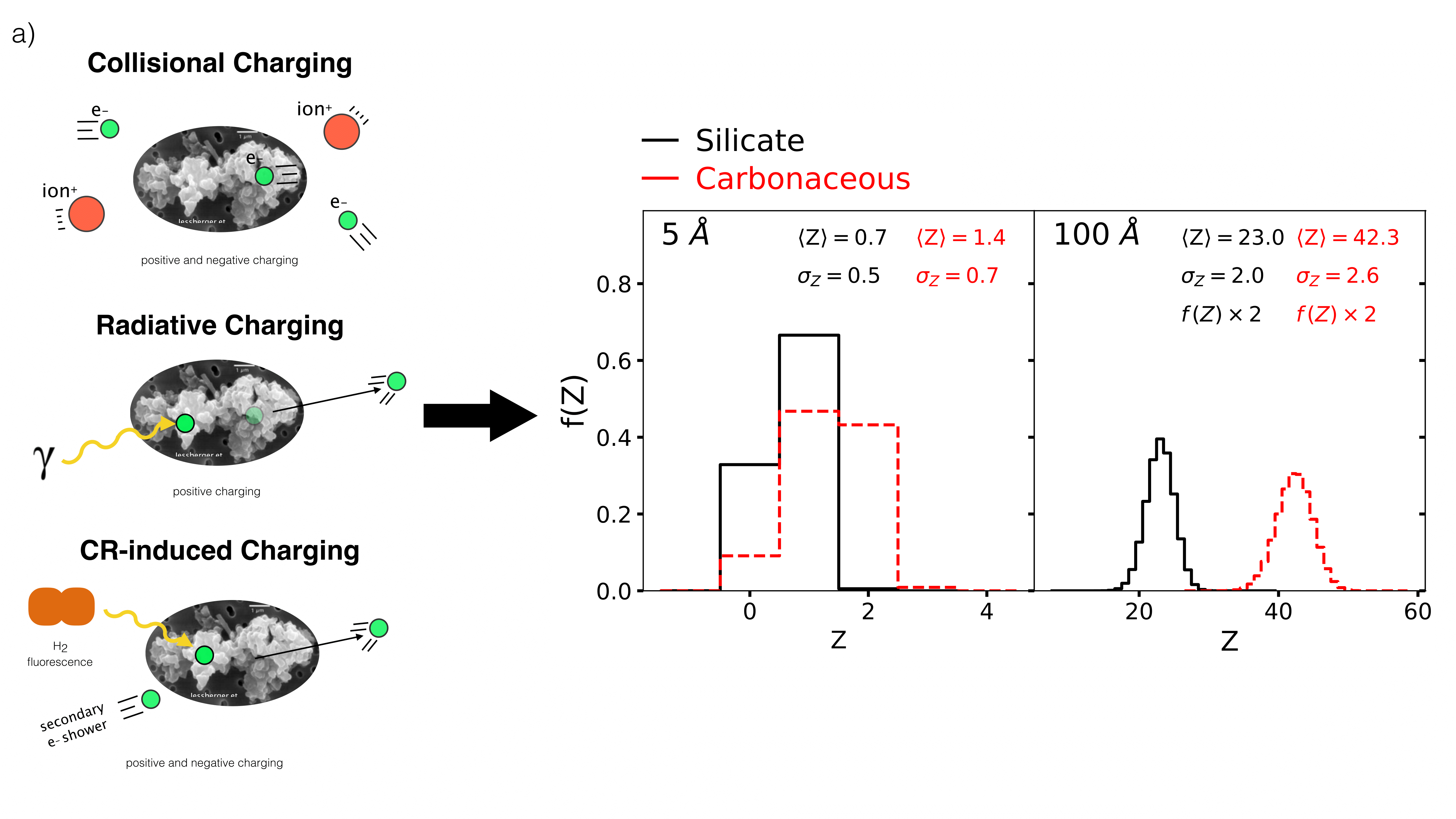The charge distribution of dust grains in the interstellar medium
Dust grains play a crucial role in the thermal, chemical and dynamic properties of the interstellar medium (ISM). For example, they are a catalyst for molecular hydrogen formation and more complex molecules, they are the main heating source of the cold and warm neutral medium through photoelectric heating, and they couple the interstellar magnetic field to the neutral gas within dense regions. Dust grains may be neutral, positively or negatively charged, and this charge regulates all their interactions with the ISM. In this project, we investigate the equilibrium charge distribution function of al dust grain population in various ISM environments, from the warm neutral medium, to the cold neutral and cold molecular medium, and derive a new set of parametric equations to reconstruct the charge distribution of a dust grain as a function of its size, composition and the properties of its environment.Our model of the dust charge accounts for collisional charging by electrons and ions, photoelectric charging due to a background interstellar radiation field, the collection of suprathermal cosmic ray electrons and photoelectric emission due to a cosmic ray induced ultraviolet radiation field within dense molecular clouds. The charge distribution of dust grains is size and composition dependent, but it also depends on some properties of the environment such as local radiation field strength, temperature and electron density.
We find that in the molecular medium, both carbonaceous and silicate grains have mostly negative or neutral charges with narrow distributions. In the cold neutral medium, carbonaceous and silicate grains vary from negative and narrow distributions, to predominantly positive and wide distributions. In the warm neutral medium, grains of all sizes are positively charged with wide distributions.
Although we calculated the equilibrium charge distribution, i.e. assuming charging processes are much faster than the dynamics of the environment, we find that this condition holds for all of the environments studied here, and should even remain valid for simulations with very high resolution, down to AU scales. We have also derived a set of parametric equations that can be used to recover the charge distribution function of carbonaceous and silicate grains from 3.5 A to 0.25 μm, which can be easily implemented in chemical networks or numerical simulations where knowledge of the grain charge is necessary.
